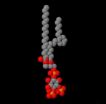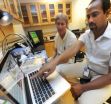(Press-News.org) Munich, Germany – Electrical storm (ES) is a potent risk factor for mortality and morbidity, according to research presented today, August 26, at the ESC Congress 2012 by Dr Federico Guerra from Italy. Data was also presented on which patients are prone to developing ES and how effective current treatments are.
Sustained ventricular arrhythmias, such as ventricular tachycardia (VT) or ventricular fibrillation (VF), are often seen as serious and devastating events, given their ability to lead to cardiac arrest and death if not treated promptly. Dr Guerra said: "The cluster of three or more of those arrhythmias within a 24 hour timeframe is usually called electrical storm (ES), the most devastating of all arrhythmic complications."
ES is more frequently seen as an acute complication of myocardial infarction but is not uncommonly related to other cardiac diseases, such as cardiomyopathies, congenital long QT syndrome and Brugada syndrome. The highest incidence of ES is however reported in patients with an implantable cardioverter defibrillator (ICD). "This incidence, which ranges from 4% to 60%, is mainly due to two factors," said Dr Guerra. "First, ICD can detect the VT or VF underlying a clinical episode of dizziness, syncope or even aborted sudden cardiac death, thus making the diagnosis far easier. Second, and most important, it can effectively treat the first and second VT or VF, thus saving the patient from sudden cardiac death and making him able to withstand more arrhythmic episodes."
The aim of the study was to collect all the data available regarding ES to see its real impact as a risk factor for death and impaired quality of life. The researchers conducted the largest meta-analysis of ES to date and pooled together 6,979 patients with ICD implantation from 32 different studies. Dr Guerra said: "We sought to investigate whether there are any clues that enable us to predict ES, or at least tell us if some specific types of patients will be more prone to develop ES. Finally, we wanted to check what types of treatments are currently available for ES, and compare them in terms of efficacy and safety."
The researchers found that ES was a strong risk factor for death. Compared to patients with multiple VTs or VFs but no ES, patients with ES were nearly 4 times more likely to die from cardiac causes, and 5 times more likely to experience either cardiovascular death, heart transplantation, or cardiogenic shock. Patients with ES were also 9 times more likely to die from any cause than patients without any previous ventricular arrhythmias.
The researchers also found some specific subgroups of patients in which ES was more frequent. "Patients who had an ICD implanted because they have already experienced a VT or VF have the highest probability of developing ES," said Dr Guerra. "Patients with severe impairment of heart function and disabling symptoms of heart failure are also more prone to ES. And a specific subtype of VT, called monomorphic VT, is frequently followed by other arrhythmic episodes, which often culminates in ES."
When the researchers analyzed available treatments for ES they found that pharmacological treatment was often ineffective for terminating acute episodes or preventing recurrences. But Dr Guerra said: "The ablation of specific zones inside the heart by means of little catheters inserted from a peripheral blood vessel can provide effective termination of ES in nearly 83% of the cases, preventing relapses over the following years."
"Our work confirmed ES as a potent risk factor for mortality and morbidity," he added. "Even if it is still not possible to predict ES with certainty, our work helped to recognize specific subtypes of patients who are more prone to develop ES. Doctors can use this information to identify which of their patients are at risk of ES and take appropriate preventative measures. We also found that pharmacological therapy performs poorly in ES patients and should be accompanied by catheter ablation whenever possible, especially in a high-risk setting."
###
Notes to editors
Please note that picture and CV from the author, abstract, picture and CV from spokesperson can be found here.
About the European Society of Cardiology www.escardio.org
The European Society of Cardiology (ESC) represents more than 75,000 cardiology professionals across Europe and the Mediterranean. Its mission is to reduce the burden of cardiovascular disease in Europe.
About ESC Congress 2012
The ESC Congress is currently the world's premier conference on the science, management and prevention of cardiovascular disease. ESC Congress 2012 takes place 25-29 August at the Messe München in Munich. The scientific programme is available at: http://spo.escardio.org/Welcome.aspx?eevtid=54
More information is available from the ESC Press Office at press@escardio.org. END
Electrical storm is a potent risk factor for mortality and morbidity
2012-08-27
ELSE PRESS RELEASES FROM THIS DATE:
How ocean currents affect global climate is a question oceanographer may be close to answering
2012-08-27
TALLAHASSEE, Fla. - Kevin Speer has a "new paradigm" for describing how the world's oceans circulate — and with it he may help reshape science's understanding of the processes by which wind, water, sunlight and other factors interact and influence the planet's climate.
A Florida State University professor of oceanography with a passion for teaching, Speer and a colleague recently published a significant paper in the respected journal Nature Geoscience.
Working with John Marshall, an oceanography professor at the Massachusetts Institute of Technology, Speer reviewed ...
Compounds activate key cancer enzyme to interfere with tumor formation
2012-08-27
Scientists have known for decades that cancer cells use more glucose than healthy cells, feeding the growth of some types of tumors. Now, a team that includes researchers from the National Institutes of Health's new National Center for Advancing Translational Sciences (NCATS) has identified compounds that delay the formation of tumors in mice, by targeting a key enzyme that governs how cancer cells use glucose and its metabolites.
The study, published August 26 in the advance online publication of Nature Chemical Biology, was led by researchers from the Koch Institute ...
JCI early table of contents for Aug. 27, 2012
2012-08-27
New model of muscular dystrophy provides insight into disease development
Muscular dystrophy is a complicated set of genetic diseases in which genetic mutations affect the various proteins that contribute to a complex that is required for a structural bridge between muscle cells and the extracellular matrix (ECM) that provides the physical and chemical environment required for their development and function. The affects of these genetic mutations in patients vary widely, even when the same gene is affected. In order to develop treatments for this disease, it is important ...
New model of muscular dystrophy provides insight into disease development
2012-08-27
Muscular dystrophy is a complicated set of genetic diseases in which genetic mutations affect the various proteins that contribute to a complex that is required for a structural bridge between muscle cells and the extracellular matrix (ECM) that provides the physical and chemical environment required for their development and function. The affects of these genetic mutations in patients vary widely, even when the same gene is affected. In order to develop treatments for this disease, it is important to have an animal model that accurately reflects the course of the disease ...
The role of genes in political behavior
2012-08-27
Politics and genetics have traditionally been considered non-overlapping fields, but over the past decade it has become clear that genes can influence political behavior, according to a review published online August 27th in Trends in Genetics. This paradigm shift has led to novel insights into why people vary in their political preferences and could have important implications for public policy.
"We're seeing an awakening in the social sciences, and the wall that divided politics and genetics is really starting to fall apart," says review author Peter Hatemi of the ...
Review of new evidence to treat colonic diverticulitis may help doctors
2012-08-27
Recent evidence and new treatments for colonic diverticulitis that may help clinicians manage and treat the disease are summarized in a review in CMAJ (Canadian Medical Association Journal).
Diverticular disease, in which sac-like protrusions form in the wall of the colon, is common in developed countries, although it is increasing throughout the world, likely because of lifestyle changes. In people with the disease, about 25% will develop symptoms, which include abdominal pain and changed bowel habits, often leading to a diagnosis of irritable bowel syndrome. The widespread ...
Vitamin B3 may offer new tool in fight against 'superbugs'
2012-08-27
CORVALLIS, Ore. – A new study suggests that nicotinamide, more commonly known as vitamin B3, may be able to combat some of the antibiotic-resistance staph infections that are increasingly common around the world, have killed thousands and can pose a significant threat to public health.
The research found that high doses of this vitamin increased by 1,000 times the ability of immune cells to kill staph bacteria. The work was done both in laboratory animals and with human blood.
The findings were published today in the Journal of Clinical Investigation by researchers ...
Fitting Kv potassium channels in the PIP2 puzzle
2012-08-27
A recent study in the Journal of General Physiology brings new insights to an area of ion channel regulation: whether voltage-gated potassium (Kv) channels can be regulated by physiological changes to PIP2.
Potassium channels, microscopic pores that allow potassium ions to cross cell membranes, are crucial to such diverse processes as conduction of the nerve impulse, regulation of the heartbeat, and the secretion of hormones such as insulin. PIP2, a minor phospholipid component of cell membranes, regulates the activity of various proteins in the cell membrane, and ...
Leg compressions may enhance stroke recovery
2012-08-27
AUGUSTA, Ga. – Successive, vigorous bouts of leg compressions following a stroke appear to trigger natural protective mechanisms that reduce damage, researchers report.
Compressing then releasing the leg for several five-minute intervals used in conjunction with the clot-buster tPA, essentially doubles efficacy, said Dr. David Hess, a stroke specialist who chairs the Medical College of Georgia Department of Neurology at Georgia Health Sciences University.
"This is potentially a very cheap, usable and safe – other than the temporary discomfort – therapy for stroke," ...
Renal denervation improves blood pressure and arterial stiffness
2012-08-27
Munich, Germany – August 27 2012: Renal denervation improves blood pressure and arterial stiffness in patients with therapy resistant hypertension, according to research presented at ESC Congress 2012 by Mr Klaas Franzen from the University Hospital of Schleswig-Holstein. The findings suggest that renal denervation regenerates blood vessels and could reduce cardiovascular events.
Malignant arterial hypertension was historically treated with surgical thoracolumbar splanchnicectomy, a type of sympathectomy treatment that was introduced in 1938. "A significant reduction ...


